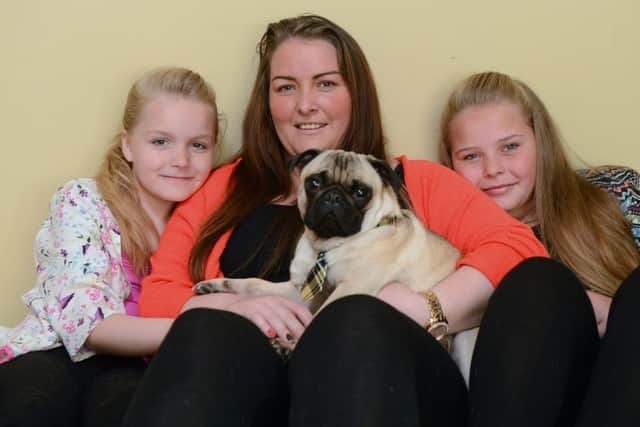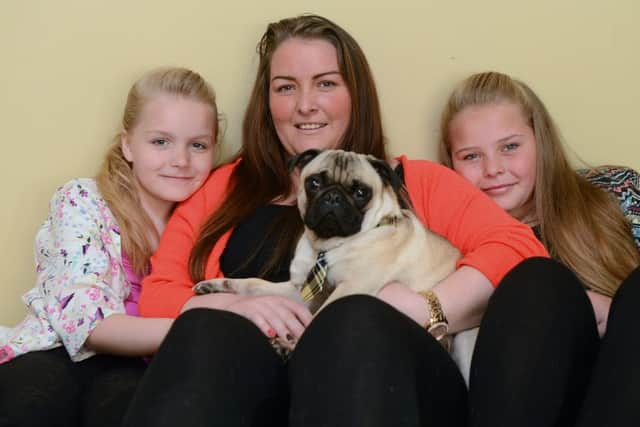Small changes to help reduce household bills


It’s only when we stop and think of how many appliances and gadgets we might be running at any one time that the scale of our energy addiction becomes worryingly clear.
Every year, Scotland’s households spend around £1.48 billion on electricity, while the weather means Scots use up more gas than any other part of the UK.
Advertisement
Hide AdAdvertisement
Hide AdBut it’s not just the financial costs that are an issue. Every home is responsible for masses of CO2 every year – the equivalent weight of a large family car – just for the electricity it consumes.


Now a major new Scottish Government campaign is underway, aimed at encouraging us all to think about how much energy we use.
At its heart is a series of short films featuring comedian Phil Kay, who points out the “Stupidly Simple” tiny tweaks every household could make to help Scotland reduce greenhouse gas emissions by 42 per cent by 2020 and 80 per cent by 2050.
It’s hoped that if we all play our part across five key areas – home energy, food waste, travel, reducing and reusing what we have and recycling what we don’t need – we’ll make Scotland greener.
New figures show Scotland has missed its annual climate change targets for the fourth year in a row. Although greenhouse gas emissions fell by 3.6 per cent between 2012 and 2013, we are still responsible for 53 million tonnes of carbon dioxide every year.
According to Mike Thornton, UK group director, Government Programmes, Energy Saving Trust, it’s in all our interests to act.
“It’s now generally accepted that our climate is changing and we’ll see more extreme weather events in Scotland in the future,” he says. “Longer term, these changes are likely to affect health, infrastructure, agriculture, air and water quality and more. However, we can all play our part in slowing down and minimising these changes by cutting our carbon emissions, using energy more efficiently, switching to renewable energy sources, avoiding food waste and recycling.”
Scottish households and individuals are responsible for 77 per cent of Scotland’s consumption emissions. Yet cutting down doesn’t have to mean dramatic changes in lifestyle – if we all simply tweaked the central heating thermostat by one degree we would save £85 million a year and enough CO2 to fill 168 Murrayfield stadiums.
Advertisement
Hide AdAdvertisement
Hide AdMike adds: “Since 2004, the average bill in Scotland for people paying by direct debit has gone up 117 per cent for gas and 46 per cent for electricity. Being more aware of how much energy we use at home and reducing our energy use where we can will help us save money.”
Drew Murphy, of Changeworks, which works with organisations across Scotland on solutions to waste issues, says: “Around 60 per cent of energy used in the home goes on heating. Making it as efficient as it can be – from major stuff like insulating it and fitting double, even triple, glazing, to keeping doors closed and draught proofing – adds up. Many people bung on the heating, turn the thermostat up to maximum, wait until it’s hot, turn it off and open the windows. Using the thermostat properly, setting it at between 18C and 20C and finding the sweet spot, is much better.”
Putting up thick curtains, sealing gaps around floorboards, fitting a warm carpet and switching off appliances when not in use, all help.
For more energy saving information, go to www.changeworks.org.uk, www.greenerscotland.org and www.energysavingtrust.org.uk
Case study
Leeanne Walker, 30, lives in a council flat in Edinburgh, with daughters Teigan, 11 and Kiara, eight and their pet pug, Prince. With two lively girls to look after, household bills to juggle and all the stresses of being a working single mum, Leeanne already has her work cut out before she starts looking at how to be more “green”. But with one eye on the rising costs of electricity and gas and the other on her pay packet as a care assistant, she is already living by a “waste not, want not” motto without even realising.
“I do try to watch what we go through,” she explains. “It’s common sense, mostly.”
She recently moved into her rented council flat in Muirhouse, Edinburgh, and is still getting to grips with the new estimated bills system from her energy supplier – a change from the “pay as you go” method she was used to.
Faced with an estimated £530 annual bill for gas and electricity, she’s keen to not go over it – and hopes to find herself with a refund at the end of the year.
Advertisement
Hide AdAdvertisement
Hide Ad“We’re lucky because we’re on the top floor with two floors beneath us, so we should get the heat rising up. But it’s quite hard to tell whether I’m going to have to pay more or less.”
She hopes double glazing and loft insulation will help keep the heat in and stop waste.
Changing to energy-saving lightbulbs could help, but while Leeanne knows most of the lightbulbs in her home are traditional style, changing them isn’t a top priority.
“The girls are good at switching things off but they have all the usual gadgets – phones, computers, things like that, which need to be charged up. And I do charge my phone up overnight, which I probably shouldn’t do.
“The washing machine is on regularly but usually just a 30-minute cycle. I don’t think you can really tell the difference.”
With a tight budget to stick to, Leeanne makes the most of what she has, and is careful to recycle and reuse what she can.
”When the girls are finished with their clothes I give them away to family and friends rather than chuck them out. I don’t bother repairing ripped clothes because you can buy replacements fairly cheap. There’s not much you can do if they outgrow their shoes. If something like the washing machine broke, then I’d try to get it repaired rather than buy a new one.
“But if the kids need something to wear, I’ll buy new instead of second hand or from a charity shop.”
Advertisement
Hide AdAdvertisement
Hide AdWhile she tries to recycle most of the packaging that comes into the house, it can feel overwhelming.
“Everything seems to be wrapped up at least twice,” she says. “I wash out plastic bottles and reuse them a couple of times, but I’ve noticed people who don’t bother using their recycling bins.
“The bins are there, you might as well use them. There is a lot of clutter on the pavements with them, though, and if the lids blow off you end up with litter all over the street.”
In the kitchen, she admits she can be tempted by multibuy deals which can lead to leftovers and waste.
“I normally throw leftovers away, especially vegetables, which aren’t very appealing the next day.
“I don’t look at where the food comes from or how many miles it’s travelled to get to the shop. I’d choose something because it’s the right price and it looks nice.”
Leeanne relies on her Astra 1.6 for getting to work, shopping and the school run, arguing that her shift work means it’s hard to rely on public transport.
“I cover about 100 miles a week in the car. If I took a bus to work, I’d have to get a bus and then get off and walk for ages. I work shifts, sometimes I start at 7:30am, I leave the house at 6:15 to drop off the kids with relatives so they can get to school. Other times I don’t finish until 10pm and I don’t want to be hanging about waiting for a bus to get home.
“I’ve never been on the tram. It doesn’t go anywhere that I want to be. It was a lot of money that could have been better spent.”